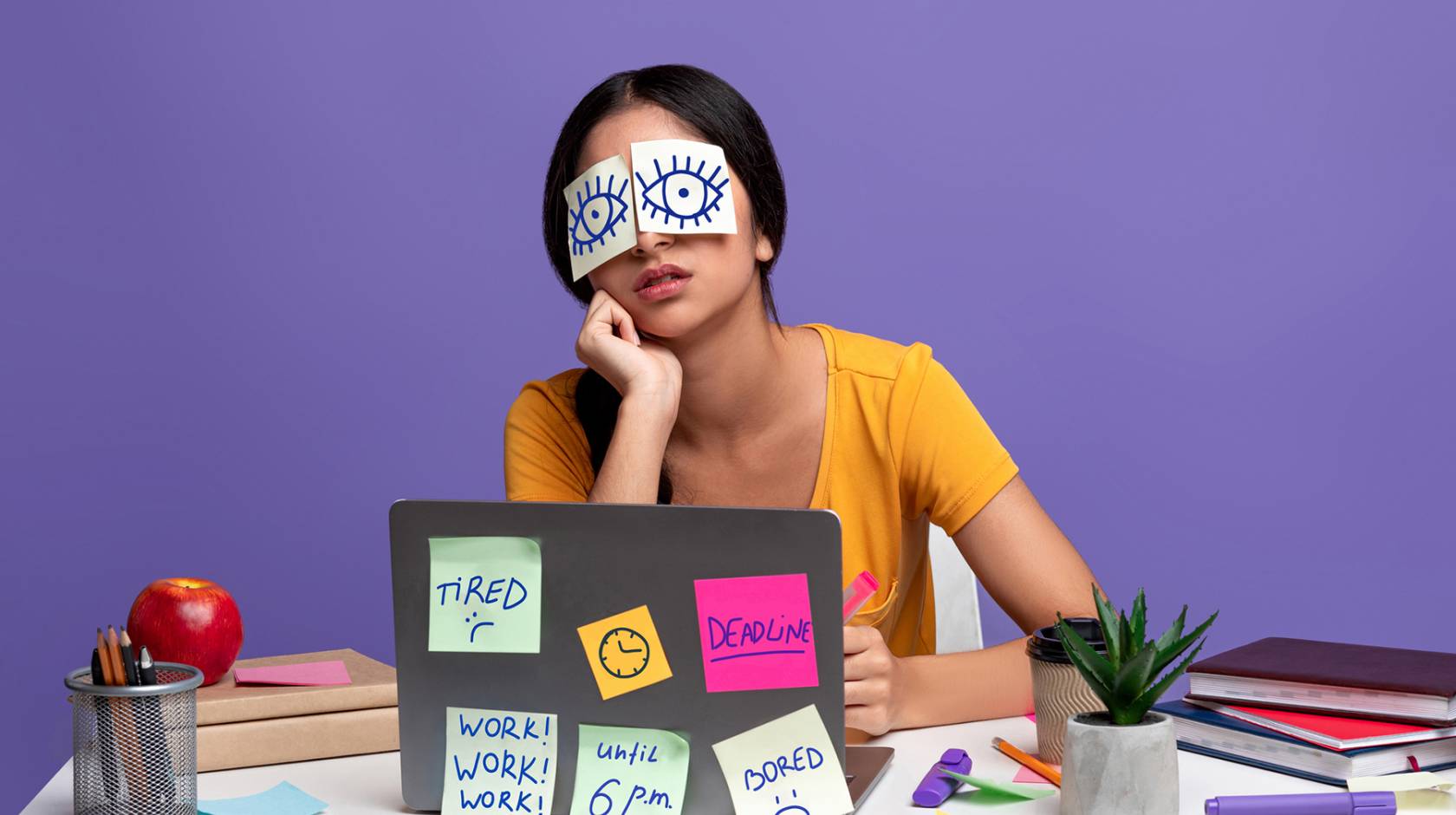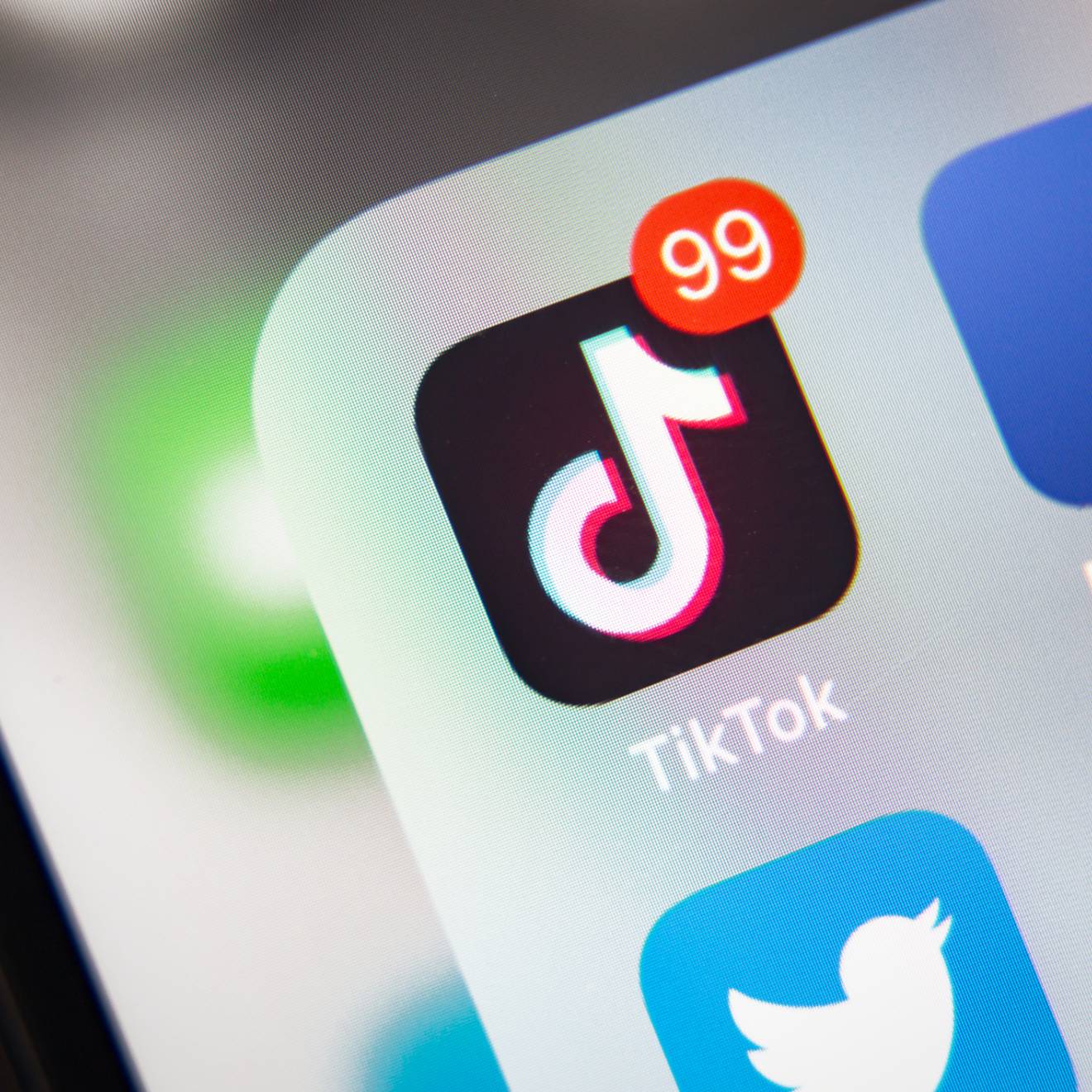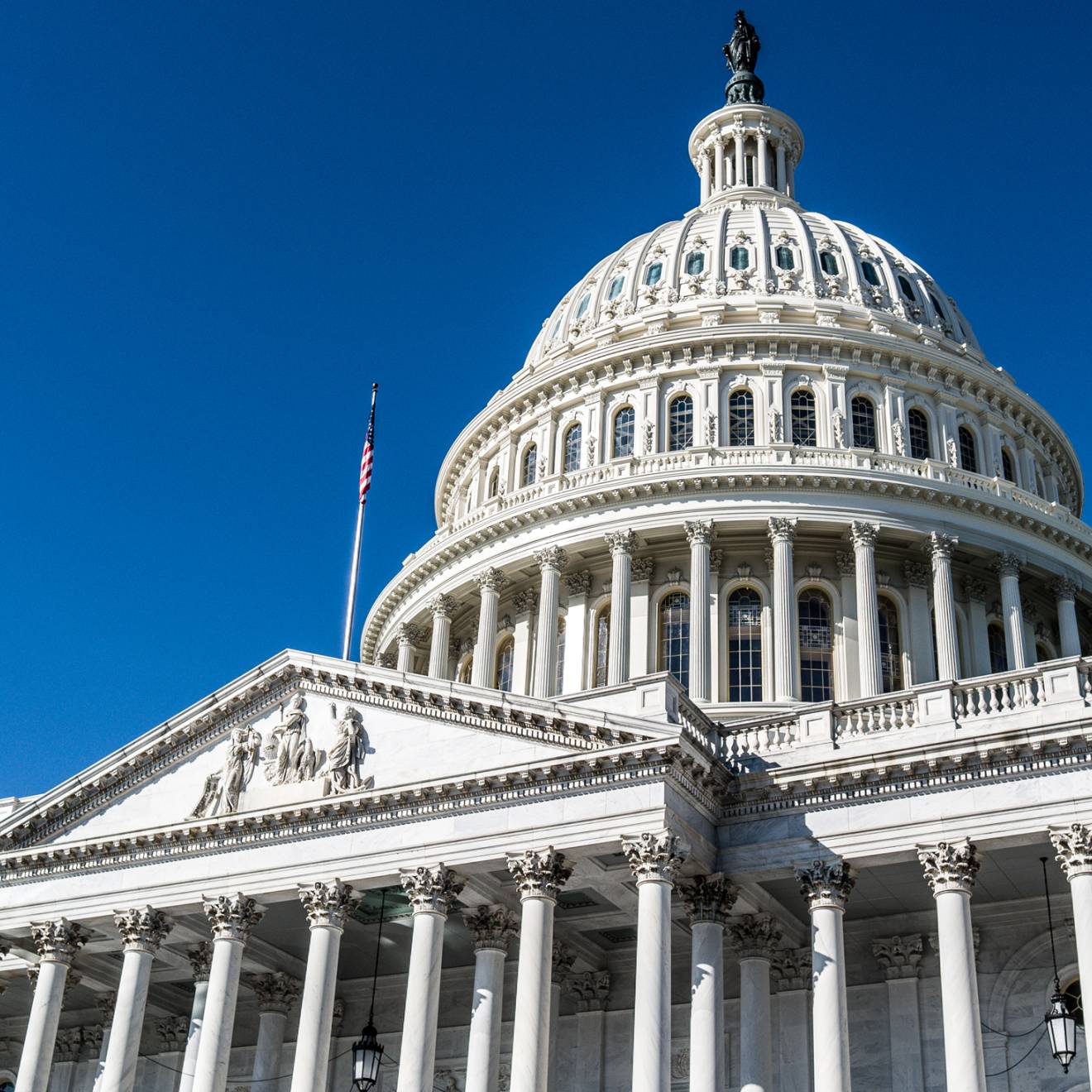Robyn Schelenz, UC Newsroom

Having trouble focusing on your New Year’s resolutions? You’re not alone – people are more distracted than ever, says Gloria Mark, professor emerita of informatics at UC Irvine.
In fact, most people today can’t concentrate on a single screen for more than 47 seconds — while recovering from an interruption can take almost half an hour.
Mark first began studying how long people can pay attention to a single screen more than 20 years ago, at the dawn of the digital revolution. Back then, the number was two-and-a-half minutes. So if you think your focus has declined (by two-thirds!) it’s not your imagination.
The good news: It’s not too late to reclaim your attention span and find your focus. And if you’re worried you’ll have to ditch your phone and go cold turkey with social media, rest assured — that’s one thing she doesn’t recommend.
Read on to discover a few ways to increase your well-being and productivity that might surprise you (including why some popular methods, like the Pomodoro technique, might not be for everyone). If you’re looking to focus beyond 47 seconds, it’s time well-spent.
Q: When you’re studying our attention spans, what do you take into account?
Gloria Mark: I study what’s called human-computer interaction, which is how people interact with devices.
For more than 20 years, I’ve been looking at how our attention is affected when we’re looking at screens. How long does our attention linger on any screen, whether it’s a computer or a phone? How is the stress we experience during different on-screen activities correlated?
I look at how all this affects us psychologically in terms of our behavior, our stress, our attention and multitasking.
Q: When you started this work did you realize that screens were going to take over our lives?
GM: I never envisioned we would be using screens this much!
When I first started studying this, I had an awareness of my own attachment to screens. But I started measuring attention before smartphones, before Facebook and Twitter, before all of these social media giants came on the scene. E-commerce was still in its early stages. Even Google had only been around since 1998. I really didn’t foresee what it would be today.
Q: Your research really covers the information revolution basically from start to present! How has that evolved in the past 20 years, and how is it affecting us?
GM: My first paper on this subject was published in 2004 from a study conducted in 2003. We found attention spans on screens to average two-and-a-half minutes. In other words, we could focus and stay on one screen for 150 seconds, on average, before moving away.
Then social media came along, online gaming, just a wider variety of things for people to do on the internet. Smartphones, invented in 2007, really took away our attention. During all this, we kept studying human-computer interaction.
By the time you get to 2020, we find the average attention paid to a single screen is 47 seconds.
This has been replicated by multiple researchers. Taking all these studies together from 2016 till 2020, right before the pandemic started, that average comes to 47 seconds, a very clear difference.
A lot has happened. But as I point out in my book “Attention Span,” everyone tends to blame tech companies and algorithms, and that’s certainly a big part of it, but it’s not the only part.
Q: Why else might our attention spans have decreased so dramatically?
GM: It turns out half the time we interrupt ourselves! We self-interrupt because we’re just so tempted to look up information or we’re tempted to check email. We’re tempted to post something on social media. Very often we forget that we need to take care of something.
I argue that the design of the internet with its node and link structure is conducive to distraction because information is organized in terms of associations. And if you go to a Wikipedia page, you read a topic, you see a link, you click on that link to find out more.
The design of the internet maps very well with semantic memory theory, the idea that memory is organized in terms of making associations between concepts. Our brains are primed for that.
If information were organized differently, like an actual library, with the Dewey Decimal system, it wouldn’t be so easy to surf the web.
Then there are personality differences. Some people are very good at self-regulation, others aren’t. There are emotional and social reasons that help explain why we get distracted. Those are big ones. We’re social beings. We’re curious. We seek social rewards.
There are a lot of reasons other than just tech companies and algorithms, although that’s a big one, but it’s not the only one.
Q: I think about the different ways I’ve used Wikipedia or TikTok and sometimes it seems like a good exercise for well-being or cognitive learning capacity, right? It’s not all bad.
GM: Getting rid of social media altogether is one option, but we find that people are happiest when they can do mindless, easy, engaging activities. Maya Angelou talked about her big mind and her little mind — her big mind encompassed the deep thought she put into her writing, and her little mind focused on crosswords or other kinds of puzzles as a way of giving her big mind a rest. I love those terms.
If you come out of a difficult meeting and your mind is racing, it’s okay to do something easy and engaging to give yourself a chance to reset.
The problem is when we get trapped. We end up going down a rabbit hole with social media, or we can’t pull away from a game. It’s really important to put a time limit on those activities.

Gloria Mark, Ph.D.
Q: One of the paradoxes with social media is that, if our attention span is only 47 seconds (which sounds accurate), it’s easy to say, oh, I’ll just watch this and go to the gym … then still end up on social media for hours! How does that happen?
GM: I call these attention traps because they’re engaging, rewarding ... and very easy to fall into! We find when people go on TikTok and find a hilarious video they want to stay there because they’re looking for that next hilarious video. And that’s a lot more rewarding than doing housework or whatever you need to be doing. That’s the trap.
It’s important to be aware of those traps so we can be more intentional about what we’re doing.
Q: Do you have any tips for helping to wind down from all that intense information processing that we end up doing every day?
GM: I think the best thing to do is meditate. During the pandemic UC Irvine offered a course in mindfulness-based stress reduction, and I found that course so helpful. Before I go to bed, I do a 25-minute meditation that really helps settle my mind.
Studies also show one of the best ways to relax is to take a walk in nature. The research shows that just 20 minutes being in nature really can de-stress us, make us more creative. In many places, California’s climate is great for that.
Q: You’re a professor and an expert in psychology — I imagine you’re getting lots of emails every day from students, media, and so on. You seem like a pretty focused person. How are you able to stay focused on serious science, or unplug?
GM: I set boundaries and goals. Goals are really important because our attention is goal-directed. We pay attention to what our goals are. If my goal is to write an article, I really pay attention to doing that until I meet that goal. If my goal is to do something fun, my goal is to have fun. So I might play a game on my phone. If my goal is to find out what’s going on in the world, I read the news.
If you really want to finish something and control your attention, you have to pay attention to your goals. And goals are slippery. They slip out of our minds very quickly. So if you need to meet that goal, write it on a post-it note or put it in your field of view, so you’re always reminded of it.
Q: I like that idea, because with a concept like attention, you need a place to start to think about how you might change your habits. You can’t just be frustrated about it. Because if you’re frustrated, you’re probably more inclined to seek out simple pleasure-seeking stuff like funny TikTok videos.
GM: I write about this notion of designing your day. Typically, when people schedule their day, they write a to-do list, sometimes a time next to a specific task, based on their calendars. Estimate how long it takes to get something done.
But there are times during the day when people have their attention at a peak — we all have our individual best times. Find out when your peak time is and intentionally schedule those tasks at that time when you’re at your best. Maybe it’s morning, maybe it’s evening. You want to align the most important thing you really want to get done with that time and set a goal to do it then.
Q: What do you think about techniques like the Pomodoro technique, or other ways of improving our attention? Are there any specific practices you would recommend to build good attention habits?
GM: The problem with the Pomodoro technique is that it is a “one-size fits all” approach. There are individual differences in people’s rhythms of attention: when their focus peaks and when it is at a low point. It is much better for people to gear their breaks to the times when their own level of attentional resources begin to wane.
For example, a person may be on a roll in their task and then the 25-minute Pomodoro timer goes off and it’s an interruption. It might be hard to reorient back to the task.
It’s best for people to gain an awareness of when they are starting to tire, and then to be proactive to take a break before they get exhausted. A way to build good attention habits is to intentionally design breaks or “quiet time” into your day so that this is not neglected. It will help performance.
Learn your own rhythm of attention. You can keep a diary for a few days of when you start to feel tired. Also, get to know your chronotype (most people do) and this can help you in planning your day (are you an early, late, or moderate type?).
Q: How can your work inform not just individuals, but workplaces or other organizations?
GM: I would love for management to be more aware about workers’ well-being. Companies like Allianz or Volkswagen in Germany have established quiet times during the day when no electronic messages are sent.
This means people don’t have expectations that they must answer Slack or email. You can relax, you can focus on your work. That’s one step.
I’m also a big fan of “right to disconnect” laws. There’s a law in France called the El Khomri Law that protects individuals from being penalized for not answering electronic work communications after hours. There are similar policies in Ireland and Ontario, Canada, but I would love for that to be more widespread. I’d love for that to be more present in our culture.
Q: Do you think our attention spans will continue to decrease? Or do you think there is hope our attention can rebound — on a social or personal level?
GM: I hope that they won’t keep decreasing, but we really can’t say without measuring them. They do seem to have reached a steady state of about 47 seconds for about five years, so perhaps attention spans won’t get shorter.
I am an optimist and do feel that we can do a course correction and that attention spans can lengthen. People are becoming more aware of their inability to pay attention and many people are actively taking steps to address this, like taking sufficient breaks, doing mindfulness meditation, and trying to monotask, as opposed to multitask. Organizations are also taking measures, such as instituting a quiet time, where electronic communications like email won’t be sent out, giving people time to focus on work. I hope that policies like the right to disconnect (after work hours) are instituted by more companies. There are also many startups proposing innovative solutions (some, ironically, are technical) to help people focus better. So I do feel that with greater awareness of how we pay attention, we will improve.
To learn more about how our attention works and how we can improve it, check out Gloria Mark’s new book, “Attention Span: A Groundbreaking Way to Restore Balance, Happiness and Productivity.

